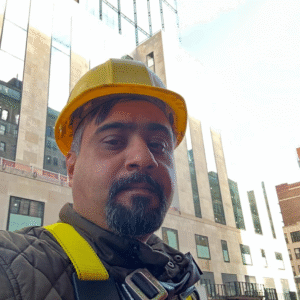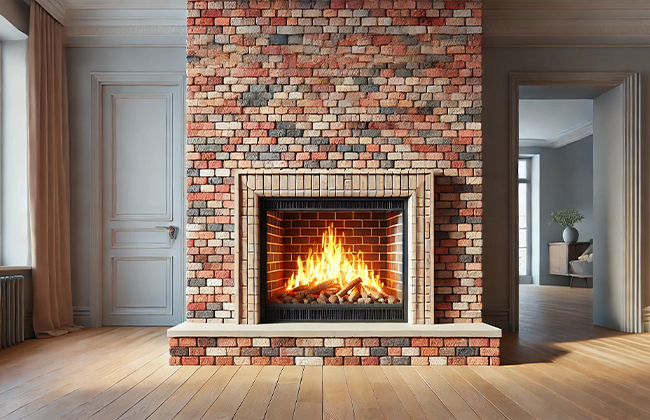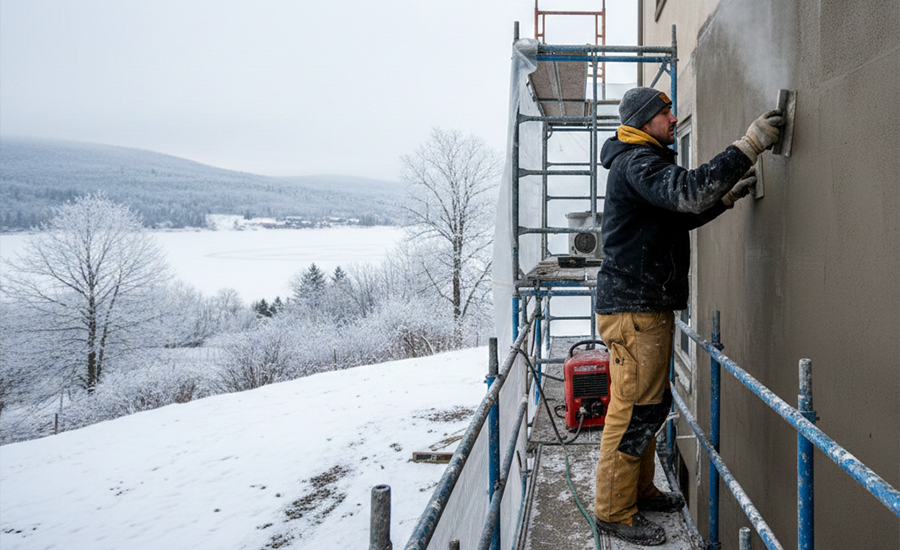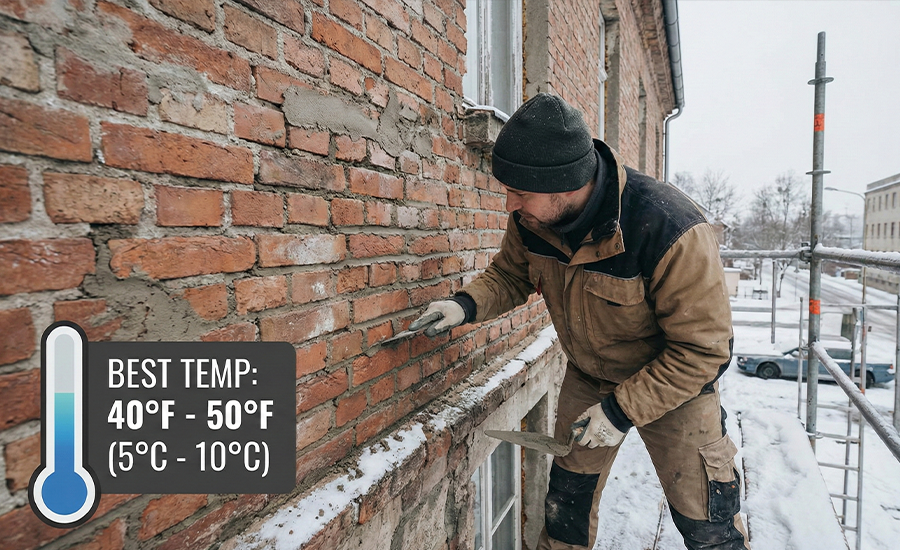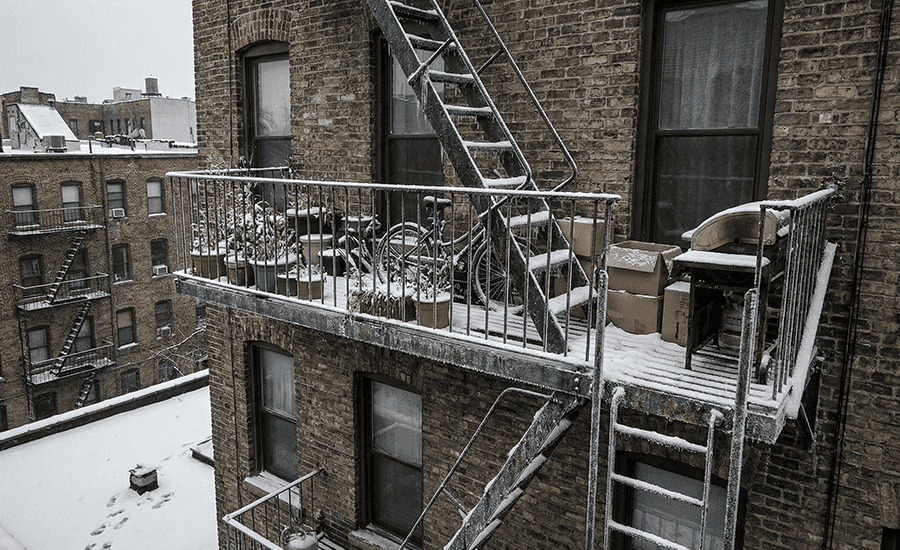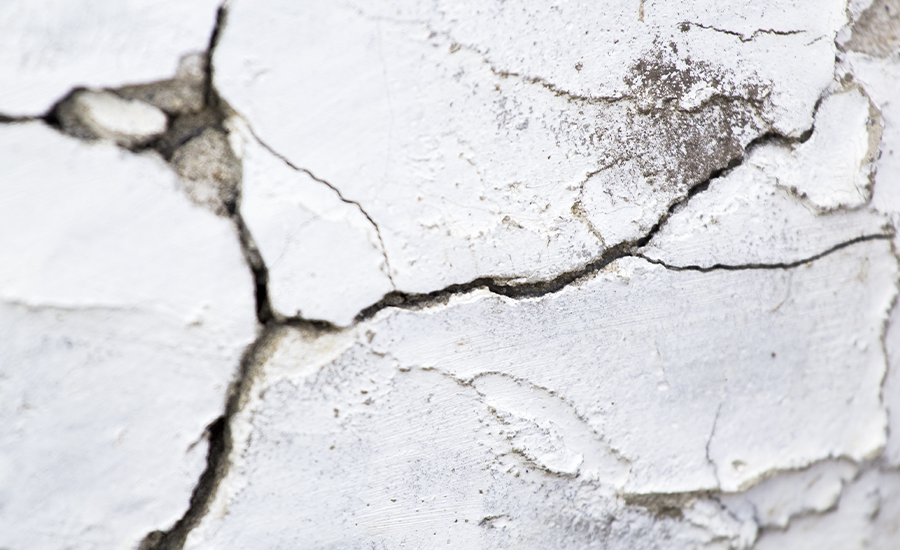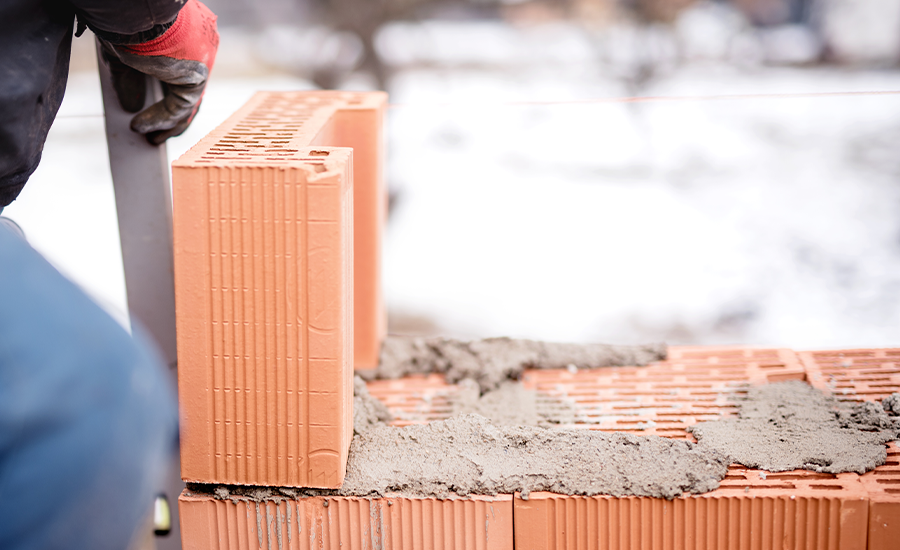Brick fireplace repair is essential to maintain the safety and functionality of your home’s heating system. Regular maintenance and timely repairs prevent structural damage and improve the efficiency of your fireplace, ensuring it provides warmth and comfort reliably. This guide will delve into the best practices for brick fireplace repair.
Understanding Brick Fireplace Structures
Brick fireplaces not only add aesthetic value to your home but are also functional elements that provide warmth. Understanding the basic structure and common wear signs can help you maintain the integrity and safety of your fireplace.
Basics of Brick Fireplace Construction
Brick fireplaces are constructed using firebricks and mortar specifically designed to withstand high temperatures. The structure typically includes a firebox, where the fire burns, and a chimney, which expels the smoke. It’s crucial to ensure that these components are built with precision to avoid any structural inefficiencies that can lead to heat loss or, worse, fire hazards.
Building a brick fireplace begins with laying a solid foundation. This foundation supports the weight of the firebox and chimney, ensuring they remain stable and functional over the years. The firebox walls are then laid out with firebricks and high-temperature mortar, designed to resist the intense heat generated by burning wood or other fuels. The chimney is simultaneously constructed to ensure it properly drafts the smoke out, keeping your indoor air quality clean and safe.
Common Signs of Fireplace Wear and Tear
Over time, even the sturdiest brick fireplace can show signs of wear and tear. Here are some common issues you might encounter:
- Cracks in the Bricks or Mortar: These can appear due to thermal expansion and contraction caused by the heating and cooling cycles of the fireplace. Small cracks can be filled with high-temperature mortar, but larger cracks may need professional assessment.
- Spalling Bricks: This occurs when moisture penetrates the bricks, causing them to peel or flake off. It is often a sign of poor waterproofing or aging material.
- Deteriorating Mortar Joints: Over time, the mortar may erode, which can loosen the bricks and compromise the structural integrity of the fireplace. This issue should be addressed promptly to prevent further damage.
- Soot Buildup: Excessive soot accumulation can block the chimney and increase the risk of a chimney fire. Regular cleaning is essential to keep the passageway clear and the fireplace functioning efficiently.
Spotting these signs early and addressing them can extend the life of your fireplace, making it safer and more efficient. Regular checks are crucial, and in the next section, we will explore how to establish and maintain a consistent maintenance routine to keep your fireplace in excellent condition.
Regular Maintenance Tips
Maintaining your brick fireplace is crucial to ensure its longevity and safety. By following daily and weekly routines along with seasonal checks, you can prevent many common problems that lead to expensive repairs or unsafe conditions.
Daily and Weekly Maintenance Routines
Regular upkeep is key to keeping your brick fireplace in good shape. Here’s what you can do every day and week:
- Daily Inspections: Quickly glance over the hearth and the area around your fireplace. Keep an eye out for any loose bricks or debris that might have fallen. Regularly removing ashes after each use will prevent accumulation and maintain air quality.
- Weekly Cleaning: Dedicate time each week to clean the exterior and interior of your fireplace. Use a brush to gently scrub the bricks to remove soot and dust. Avoid using harsh chemicals; a mixture of warm water and mild soap works best. It’s also a good idea to check for any signs of moisture or leaks, especially around the chimney base, as these can lead to serious problems if left unattended.
Seasonal Checks and Preparations
As the seasons change, your maintenance approach should adapt, particularly in preparation for heavy use during colder months:
- Autumn Check-Up: Before the start of the burning season, give your fireplace a thorough inspection. This is the perfect time to call in a professional to clean and inspect the chimney. Ensure the chimney cap is intact to prevent animals and debris from entering.
- Spring Cleaning: After the last fire of the season, do a deep clean of your fireplace. This includes clearing out all the ashes and checking for any damage that might have occurred during the winter. Spring is also an ideal time to repair any minor cracks in the mortar or bricks to prepare for the next use.
By adhering to these simple maintenance routines, you can greatly enhance the efficiency and safety of your brick fireplace. With regular care, your fireplace will not only perform better but will also serve as a cozy, inviting centerpiece in your home for many years.
Next, we will identify common problems that might arise with your fireplace, providing tips on how to address them effectively.

Identifying Common Problems
Recognizing and addressing common issues with your brick fireplace can prevent minor problems from becoming major, costly repairs. Here’s what to look out for and how to deal with the typical challenges that fireplace owners face.
Cracks and Mortar Damage: What to Look For
Regular inspections can reveal early signs of cracks and mortar damage, which are crucial to address promptly:
- Visual Inspection: Regularly examine the bricks and mortar for any signs of cracks. Look specifically in areas that experience the most heat, as these are most susceptible to cracking.
- Signs of Wear: Check for loose bricks or mortar that may crumble to the touch. These can be initial indicators of deeper structural problems.
- Causes: Fluctuations in temperature often cause expansion and contraction in the materials, which can lead to cracking over time. Additionally, exposure to moisture can weaken the mortar, making it crucial to address any water ingress issues immediately.
Addressing these issues early on can save you a lot of trouble down the line. For small cracks, you can apply a high-temperature sealant designed for fireplaces. However, if the damage is extensive, it may be safer and more effective to seek professional help.
Dealing with Soot Buildup and Stains
Soot and stains not only detract from the aesthetic appeal of your fireplace but can also signify deeper issues:
- Regular Cleaning: To manage soot buildup, regularly clean the interior of your fireplace. Use a stiff brush to scrub the bricks and remove soot particles before they accumulate heavily.
- Stain Prevention: Ensure good ventilation and a well-maintained chimney to reduce the likelihood of excessive soot and smoke stains. If stains persist, you might need to check for drafting issues.
- Products to Use: For stubborn stains, you can use a solution of water mixed with a little vinegar or a commercially available soot remover that is safe for firebricks.
Maintaining a clean fireplace not only enhances its function and safety but also contributes to the overall ambiance of your home. Regularly tackling these common issues will keep your fireplace in prime condition, ensuring it’s ready when you need it.
As we continue our guide on maintaining a functional and beautiful brick fireplace, we’ll next explore DIY Brick Fireplace Repair Steps, providing you with practical advice on how to address some of these common issues yourself. This next section will equip you with the knowledge to perform basic repairs, enhancing your confidence in fireplace maintenance.
DIY Brick Fireplace Repair Steps
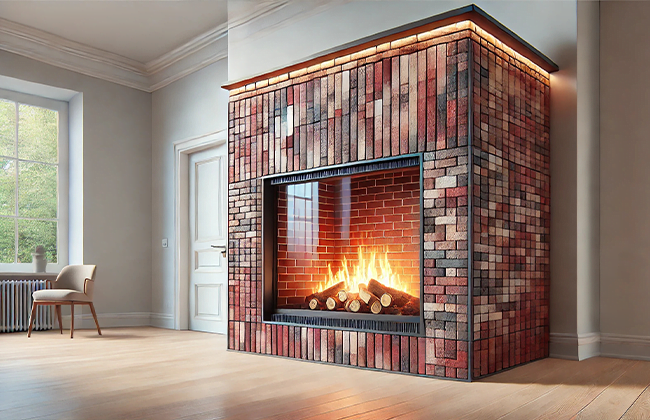
Handling basic repairs on your brick fireplace can be a rewarding DIY project. Whether you’re dealing with loose bricks or deteriorated mortar, having the right tools and a clear step-by-step guide can make the process smoother and ensure your fireplace remains in good condition.
Tools and Materials You’ll Need
Before starting any repair work, gather all the necessary tools and materials. Here’s what you’ll typically need:
- Masonry chisel and hammer: For removing damaged bricks and old mortar.
- Wire brush: To clean out debris and prepare surfaces for new mortar.
- Trowel: For applying new mortar.
- Mortar mix: Ensure you choose a high-temperature mortar mix specifically designed for fireplaces.
- Firebricks (if replacing bricks): These are specially made to withstand the high heat of a fireplace.
- Safety goggles and gloves: Always protect your eyes and hands when working with masonry materials.
Having these tools and materials ready before you start your repair project will make the process more efficient and safer.
Step-by-Step Guide to Replacing Damaged Bricks
Replacing damaged bricks is a straightforward process if you follow these steps:
- Remove the Damaged Brick: Use your chisel and hammer to carefully remove the brick without damaging surrounding bricks. This might take some patience, so take your time.
- Clean the Area: Once the brick is out, use your wire brush to clean out the cavity, removing all loose debris and dust.
- Apply New Mortar: Mix your mortar according to the manufacturer’s instructions, then apply a generous amount inside the cavity where the brick will go.
- Insert the New Brick: Place the new firebrick into the cavity. Make sure it fits snugly and aligns with the existing bricks.
- Seal the Edges: Apply more mortar around the edges of the new brick to ensure there are no gaps. Smooth the mortar with your trowel for a clean finish.
- Cure the Mortar: Allow the mortar to cure according to the package instructions. Avoid using the fireplace during this time.
How to Repoint Mortar Safely and Effectively
Repointing the mortar in your fireplace can help restore its integrity and appearance. Follow these steps to repoint effectively:
- Remove Old Mortar: Use your chisel and hammer to carefully remove old, crumbling mortar to a depth of about half an inch.
- Clean the Joints: Thoroughly clean the joints with a wire brush to remove any residual dust and debris.
- Mix and Apply Mortar: Mix your high-temperature mortar and use the trowel to press it into the joints. Make sure to fill them completely, leaving no air pockets.
- Smooth the Joints: Use the trowel to smooth the mortar, making the surface flush with the brick.
- Let It Cure: Allow the mortar to cure fully, avoiding any use of the fireplace during this period.
These repairs can significantly extend the life and performance of your brick fireplace, making it safer and more enjoyable for your home. However, some issues might be too complex for DIY methods. In our next section, we’ll discuss when it’s wise to call in a professional to handle fireplace repairs.
When to Call a Professional
While many aspects of fireplace maintenance can be handled through DIY efforts, certain situations require the expertise of a professional. Knowing when to call in expert help can save you time and ensure the safety and longevity of your fireplace.
Assessing Damage: Beyond DIY Repairs
Sometimes, the damage to a brick fireplace may be too extensive for DIY methods. Here’s how you can assess whether you need professional help:
- Extensive Cracks or Structural Damage: If you notice large cracks or signs of structural damage that affect the stability of the fireplace, it’s crucial to consult a professional. These types of issues can pose serious safety risks.
- Water Damage: Signs of water damage, such as damp patches or a musty smell, could indicate problems not just in your fireplace but also potentially in your home’s structure. Professionals can provide waterproofing solutions that go beyond surface repairs.
- Smoke Issues: If smoke is entering your home instead of properly venting through the chimney, this could be due to a blockage or structural flaw in the chimney. Chimney sweeps and fireplace professionals have the tools and knowledge to diagnose and fix these issues correctly.
Professional Solutions for Structural Issues
Professionals offer more than just repairs; they provide solutions that ensure the long-term health of your fireplace:
- Comprehensive Inspections: A professional can conduct a thorough inspection using specialized tools to check for any hidden damages in your chimney or firebox that aren’t easily visible.
- Custom Repairs: Depending on the age and style of your fireplace, a professional can perform custom repairs that match the existing structure, maintaining the aesthetic while ensuring functionality.
- Upgrades and Replacements: If your fireplace system is outdated, a professional can install modern, more efficient systems that improve heat output and reduce maintenance needs.
Calling a professional not only helps in resolving current issues but also aids in preventing future problems, thereby enhancing the safety and efficiency of your fireplace. With the right professional assistance, you can ensure that your fireplace remains a safe, warm, and inviting centerpiece in your home for years to come.
Next, we’ll explore how to enhance the efficiency and safety of your fireplace, ensuring that it operates at its best and remains a reliable source of warmth and comfort in your home.

Enhancing Fireplace Efficiency and Safety
To maximize the warmth and minimize the risks associated with your brick fireplace, it’s crucial to focus on enhancing its efficiency and safety. Implementing certain upgrades and regularly conducting safety checks can make a significant difference in performance and peace of mind.
Upgrades for Better Heat Retention
Improving the heat retention of your brick fireplace can significantly enhance its efficiency. Here are some effective upgrades:
- Fireplace Inserts: Installing a fireplace insert can dramatically increase heat efficiency. These units fit into the existing firebox and are designed to burn wood, gas, or pellets more efficiently while reducing heat loss up the chimney.
- Glass Doors: Adding glass doors to your fireplace not only improves safety by preventing sparks from escaping but also increases heat retention. The doors can be closed while the fireplace is in use, allowing more heat to radiate into the room instead of escaping up the chimney.
- Improved Damper Systems: An upgraded damper system can help control the airflow more effectively, reducing the amount of warm air lost when the fireplace is not in use. Consider installing a top-sealing damper for better thermal sealing.
Safety Checks: Ensuring Your Fireplace is Code-Compliant
Regular safety checks are essential to ensure that your fireplace complies with local building codes and operates safely:
- Annual Inspections: Have your fireplace and chimney inspected annually by a certified professional to ensure they are clear of obstructions and in good working order.
- Smoke and Carbon Monoxide Detectors: Install and maintain smoke and carbon monoxide detectors in your home. These detectors are vital for early warning in the event of a malfunction.
- Checking Ventilation: Proper ventilation is crucial for safe fireplace operation. Make sure your chimney is not blocked and that it draws air properly to ensure smoke is vented outside effectively.
By implementing these upgrades and conducting regular safety checks, you can enhance both the efficiency and safety of your brick fireplace, ensuring it serves as a reliable and cozy heat source for your home.
Looking ahead, we’ll explore the future of brick fireplaces, considering trends and innovations in design and technology that promise to redefine their role and functionality in modern homes.
The Future of Brick Fireplaces
As we look to the future, brick fireplaces continue to evolve, incorporating new design trends and technological advancements that enhance both their functionality and aesthetic appeal. These changes promise to keep brick fireplaces as cherished features in homes while adapting to modern needs and regulations.
Trends in Fireplace Design and Material
The design of brick fireplaces is shifting towards more streamlined, contemporary aesthetics that blend seamlessly with modern home designs. Here’s what’s trending:
- Minimalist Designs: Many new fireplace designs feature cleaner lines and less ornate details, focusing on simplicity and elegance.
- Eco-friendly Materials: There is a growing emphasis on using sustainable and eco-friendly materials in fireplace construction, including recycled bricks and mortars that reduce environmental impact.
- Versatile Installations: Fireplaces are no longer just central elements in living rooms. They are being integrated into various spaces around the home, including outdoor areas, to add warmth and charm in diverse settings.
Innovations in Fireplace Safety and Performance
Technological advancements are also making fireplaces safer and more efficient:
- Improved Ventilation Technologies: New ventilation systems are more effective at directing smoke and harmful gases away from living spaces, ensuring cleaner air inside the home.
- Smart Fireplace Features: Some of the latest models include smart technology that allows homeowners to control the fireplace remotely via smartphone apps, enhancing convenience and safety.
- Enhanced Heat Output and Efficiency: Innovations in design and materials are not only focusing on aesthetic improvements but also on optimizing heat output and fuel efficiency. This includes better insulation techniques and more efficient burning methods that minimize heat loss.
These advancements indicate a promising future for brick fireplaces, ensuring they remain both functional and appealing in modern homes. By embracing these trends and innovations, homeowners can enjoy the timeless charm of a brick fireplace. They benefit from the latest in design and technology. This progression points toward a warm and efficient future, keeping the hearth both literally and figuratively at the center of the home.
Conclusion
As we’ve explored various aspects of brick fireplace repair, it’s clear that maintaining and upgrading your fireplace is crucial for safety and efficiency. Whether it’s dealing with common problems, enhancing heat retention, or embracing future trends, each step ensures that your brick fireplace remains a functional and appealing part of your home. If you’re seeking a professional contractor for brick fireplace repair, don’t hesitate to contact us at (+1) 917-355-8556 for expert assistance.
FAQs
Q: What are the initial signs that indicate a brick fireplace repair is needed?
A: Early signs that you might need a brick fireplace repair include visible cracks in the mortar, loose bricks, and unusual smoke patterns during use. Addressing these issues promptly can prevent more significant problems.
Q: How often should a brick fireplace repair be conducted to ensure safety?
A: It’s advisable to schedule a professional inspection and potential brick fireplace repair at least once a year. This regular check-up helps catch and fix minor issues before they escalate.
Q: What materials are recommended for brick fireplace repair?
A: For brick fireplace repair, use high-temperature mortar and firebricks. These materials are specifically designed to withstand intense heat. They ensure long-lasting repairs.
Q: Can DIY methods be sufficient for a basic brick fireplace repair?
A: DIY methods can be effective for minor brick fireplace repair tasks, such as small cracks or replacing a few bricks. However, for extensive damage or structural repairs, professional help is recommended.
Q: What should I do if my brick fireplace repair seems to fail repeatedly?
A: If your brick fireplace repair fails repeatedly, it might indicate a more serious underlying issue. In this case, consulting with a professional who can assess the entire structure and offer a comprehensive solution is crucial.
Q: Can you redo a brick fireplace?
A: Yes, you can redo a brick fireplace to update its look or improve its function. Redoing may involve resurfacing with new bricks, applying a different type of veneer, or altering the fireplace’s design to better suit your home’s style.
Q: How long should a brick fireplace last?
A: A well-built and properly maintained brick fireplace can last for decades, often over 100 years. Regular maintenance and timely repairs are key to extending the lifespan and ensuring it remains safe and functional.
Q: How to fix brick on a fireplace?
A: To fix brick on a fireplace, remove loose mortar, clean the area, and apply new mortar. Allow it to dry completely before using the fireplace.
Q: Can you repair a fire brick?
A: Yes, fire bricks can be repaired by replacing damaged bricks and re-mortaring the joints. Use refractory mortar designed for high temperatures.
Q: How do you repair fire brick mortar?
A: Repair fire brick mortar by chiseling out the old mortar, cleaning the bricks, and applying new refractory mortar. Allow it to cure as instructed.
Q: How do you update a brick fireplace on a budget?
A: Update a brick fireplace on a budget by cleaning it thoroughly, applying a lime wash for a fresh look, or installing a new mantel.
Q: How can I reface my brick fireplace?
A: Reface your brick fireplace by adhering new materials such as stone, tile, or wood panels over the existing brick for a new appearance.
Q: How much does it cost to reface a fireplace with brick?
A: Refacing a fireplace with brick typically costs between $2,000 and $5,000, depending on the size of the fireplace and the type of bricks used.
Q: How do you Modernise an old brick fireplace?
A: Modernise an old brick fireplace by painting it, adding a sleek glass or metal fireplace screen, or installing a floating mantle.
Q: How do you update a red brick fireplace without painting it?
A: Update a red brick fireplace without painting by installing a modern mantel, adding decorative tiles around the hearth, or using a stain to change the color subtly.


